A sun-drenched backyard may look beautiful in photos, but in reality, it can quickly become uncomfortable during the hottest parts of the day. A few well-placed trees can make all the difference—providing natural shade, cooling your outdoor space, and enhancing the aesthetic value of your property.
Whether you’re aiming for a peaceful retreat, a functional gathering space, or a leafy garden escape, here are 10 fantastic trees that grow quickly and offer the kind of canopy that transforms your backyard into a shady haven.
1. Albizia lebbeck (Siris Tree)
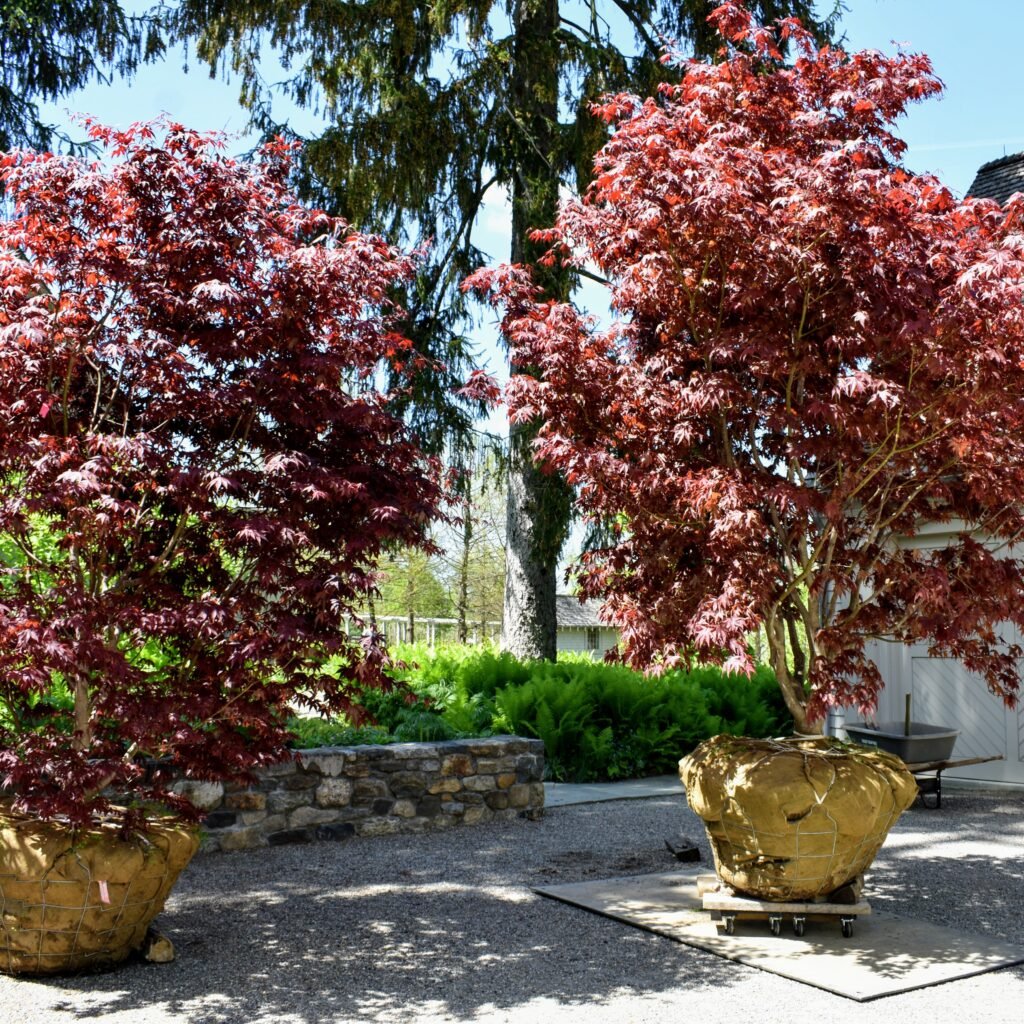
Why it’s great for shade:
Albizia lebbeck is a fast-growing tree with a wide, spreading crown that creates an umbrella-like canopy. Its light green, feathery leaves provide filtered shade that’s ideal for sitting areas and garden spaces.
Growing Tips:
- Prefers full sun and well-drained soil.
- Tolerates a variety of soil types.
- Prune regularly to encourage horizontal branching.
- Best for large backyards or as a boundary tree.
2. Neolamarckia cadamba (Kadamba Tree)
Why it’s great for shade:
Known for its dense, globe-shaped canopy, the Kadamba tree is a favorite for its fast growth and impressive shade coverage. It’s also culturally significant and blooms with fragrant yellow flowers.
Growing Tips:
- Thrives in warm, humid climates.
- Requires well-draining, fertile soil.
- Benefits from regular watering during dry spells.
- Ideal for spacious gardens and parks.
3. Azadirachta indica (Neem Tree)
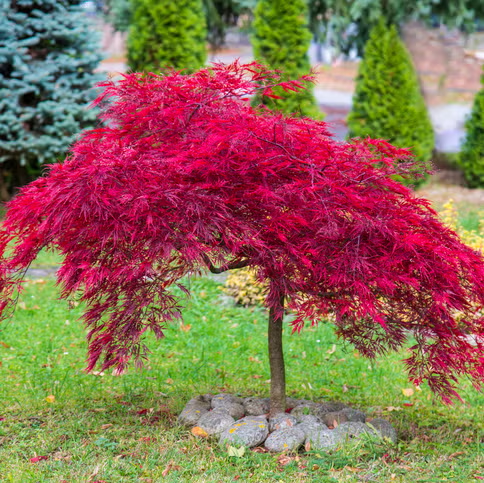
Why it’s great for shade:
The neem tree is a tough, drought-tolerant species that offers year-round shade with its dense, evergreen foliage. Besides shade, it also provides medicinal and insect-repelling benefits.
Growing Tips:
- Suitable for dry, arid regions.
- Low maintenance once established.
- Avoid waterlogged soils.
- Keep away from structures due to extensive root spread.
4. Pongamia pinnata (Karanj Tree)
Why it’s great for shade:
Pongamia is a quick-growing, broad-leaved tree that forms a thick canopy ideal for blocking harsh sunlight. Its glossy foliage and nitrogen-fixing properties make it a sustainable choice.
Growing Tips:
- Grows well in tropical and coastal areas.
- Tolerates marginal soils, including saline conditions.
- Regular pruning helps develop shape and canopy.
- Works well in medium to large backyards.
5. Delonix regia (Gulmohar or Royal Poinciana)
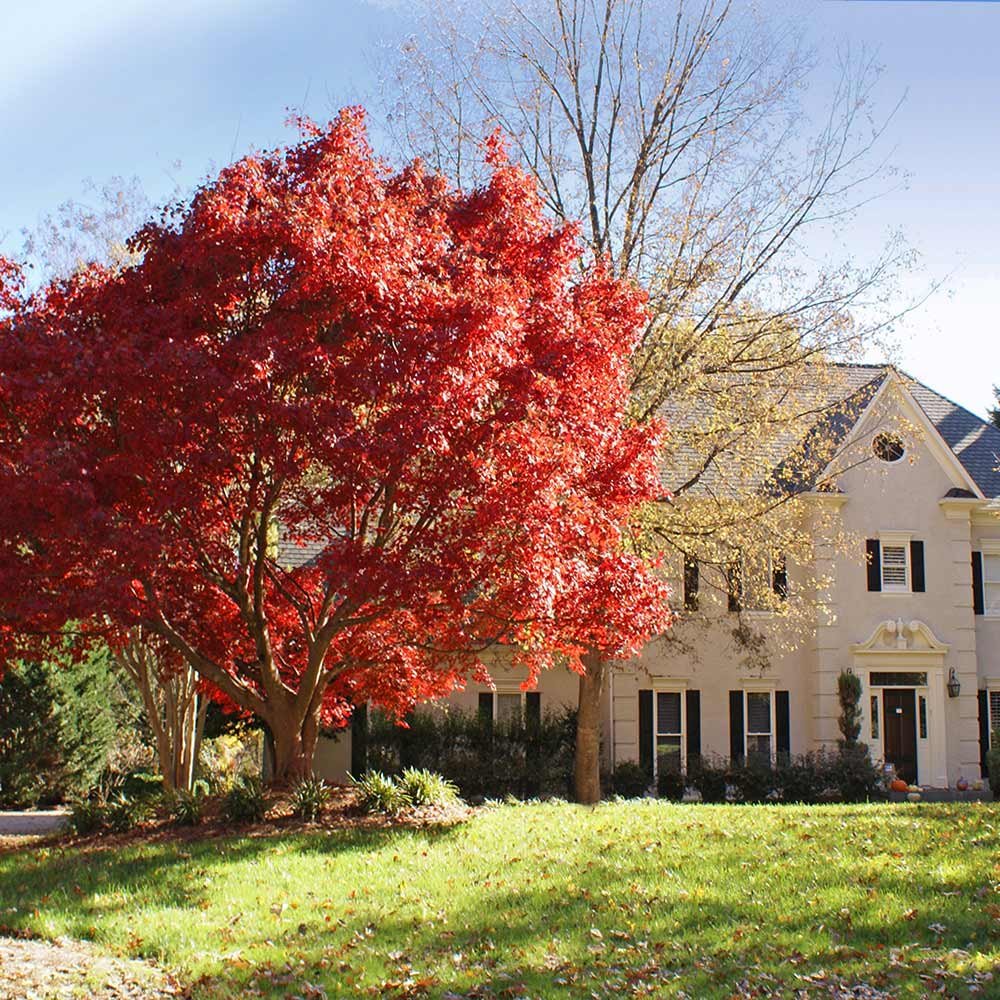
Why it’s great for shade:
With its flamboyant red-orange flowers and wide, spreading branches, the Gulmohar tree is both ornamental and functional. It provides good summer shade, though it may shed leaves during dry winters.
Growing Tips:
- Needs full sun and open space to spread.
- Prefers well-drained sandy loam.
- Ensure support during early years as it grows rapidly.
- Not ideal near structures due to lateral branch spread.
6. Mimusops elengi (Bakul Tree)
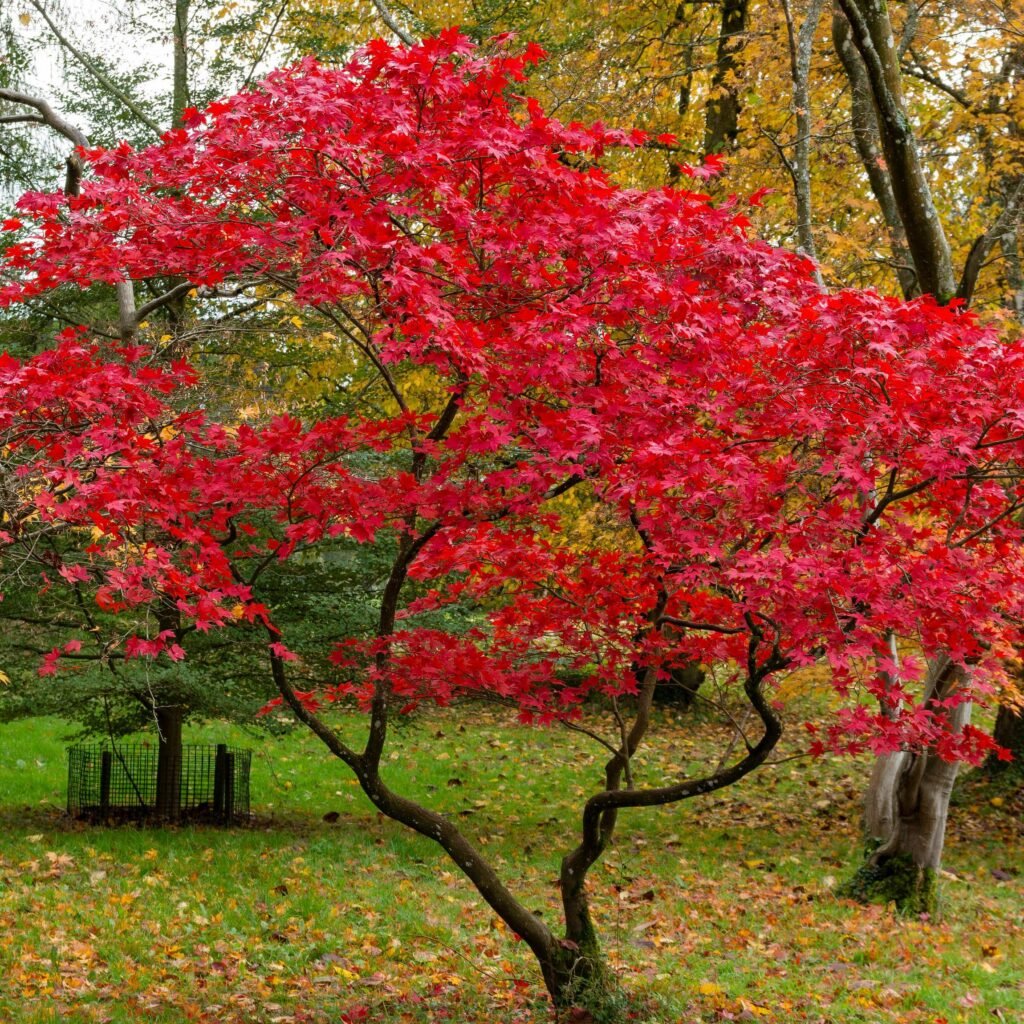
Why it’s great for shade:
This compact, evergreen tree is perfect for smaller spaces. It forms a dense canopy with small, shiny leaves and emits a lovely fragrance from its star-shaped flowers.
Growing Tips:
- Tolerates partial shade but grows best in full sun.
- Needs regular watering in the early stages.
- Suitable for avenues or as a focal tree in a backyard.
- Low leaf litter makes it a tidy choice near patios.
7. Erythrina variegata (Indian Coral Tree)
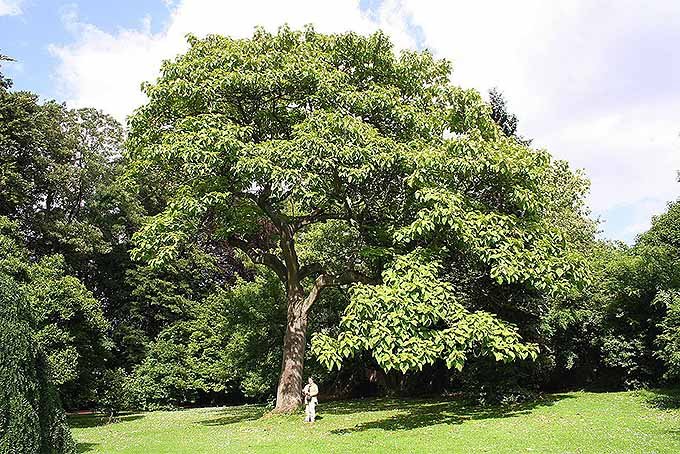
Why it’s great for shade:
Erythrina grows fast and throws a light to medium canopy, especially in summer. The striking red flowers attract birds and bees, adding biodiversity to your garden.
Growing Tips:
- Best in warm, frost-free areas.
- Prefers moderate watering and full sun.
- Deciduous in many areas, so shade may be seasonal.
- Prune regularly to prevent breakage and promote shape.
8. Leucaena leucocephala (Subabul or Lead Tree)
Why it’s great for shade:
Subabul is a fast-growing, small tree used widely in farms and gardens for its quick canopy development. Though it doesn’t give heavy shade, it’s ideal for temporary relief and interplanting.
Growing Tips:
- Thrives in poor, dry soils with minimal care.
- Monitor growth—can be invasive in some regions.
- Suitable for short-term shade while slower trees mature.
- Prune to manage shape and prevent seed spread.
9. Ficus amplissima (Indian Bat Tree or Pipli)
Why it’s great for shade:
Ficus amplissima forms a dense, wide canopy that’s ideal for cooling large open areas. It’s commonly used as an avenue tree and loved for its hardy nature and year-round greenery.
Growing Tips:
- Prefers moist, fertile soil and full sun.
- Requires ample space for roots and crown.
- Aggressive roots—avoid planting near walls or pipelines.
- Attracts birds and small mammals with its figs.
10. Ficus religiosa (Peepal Tree)
Why it’s great for shade:
One of the most revered trees in India, the Peepal tree provides deep, expansive shade and grows to be massive. Its broad canopy creates a natural cooling effect perfect for large open spaces.
Growing Tips:
- Tolerates a wide range of soil types.
- Grows well with little care once established.
- Needs space to spread—ideal for large gardens or boundary planting.
- Avoid near concrete structures due to its powerful roots.
Fast Shade Tips: How to Get Results Quicker
No tree will provide a full canopy overnight, but the following tips can help speed up your shade journey:
- Choose larger saplings: Start with 5–6 ft tall nursery-grown plants rather than tiny seedlings.
- Companion planting: Use a mix of fast- and slow-growing trees. Remove the fast growers once the long-lived species mature.
- Water wisely: Deep, consistent watering in the first two years accelerates root and canopy development.
- Mulch heavily: A thick layer of organic mulch retains soil moisture and boosts root health.
- Feed early: Use a balanced fertilizer in the growing season to encourage faster foliage and trunk development.
- Prune smartly: Removing lower branches helps trees focus energy on upward growth, which builds canopy faster.
How to Choose the Right Tree for Your Backyard
| Consideration | Best Trees |
|---|---|
| Small spaces | Bakul, Kadamba, Subabul |
| Year-round shade | Neem, Bakul, Ficus amplissima |
| Fastest canopy growth | Subabul, Pongamia, Gulmohar |
| Decorative value | Gulmohar, Erythrina, Bakul |
| Low maintenance | Neem, Pongamia |
| Wildlife attraction | Kadamba, Ficus, Erythrina |
| Poor soil tolerance | Neem, Subabul, Pongamia |
Maintenance Matters
To keep your shade trees healthy and effective, regular care is key:
- Water deeply but not daily—encourages deep root growth.
- Mulch regularly to retain moisture and suppress weeds.
- Prune annually to shape the canopy and remove dead branches.
- Watch for pests like borers, mites, or scale—early intervention is crucial.
- Don’t over-fertilize—slow, healthy growth leads to a stronger structure.
Final Thoughts
The right trees can transform a scorching backyard into a peaceful, shaded paradise. Whether you prefer fast-growing species like Pongamia and Subabul, or majestic legacy trees like Peepal and Siris, you have plenty of options. Combine ornamental beauty with practical cooling, and your backyard becomes a retreat where you can relax, entertain, or garden—all in the comfort of natural shade.
Start planting today, and within a few seasons, you’ll be sitting under your very own leafy canopy, enjoying cooler days and greener views.





